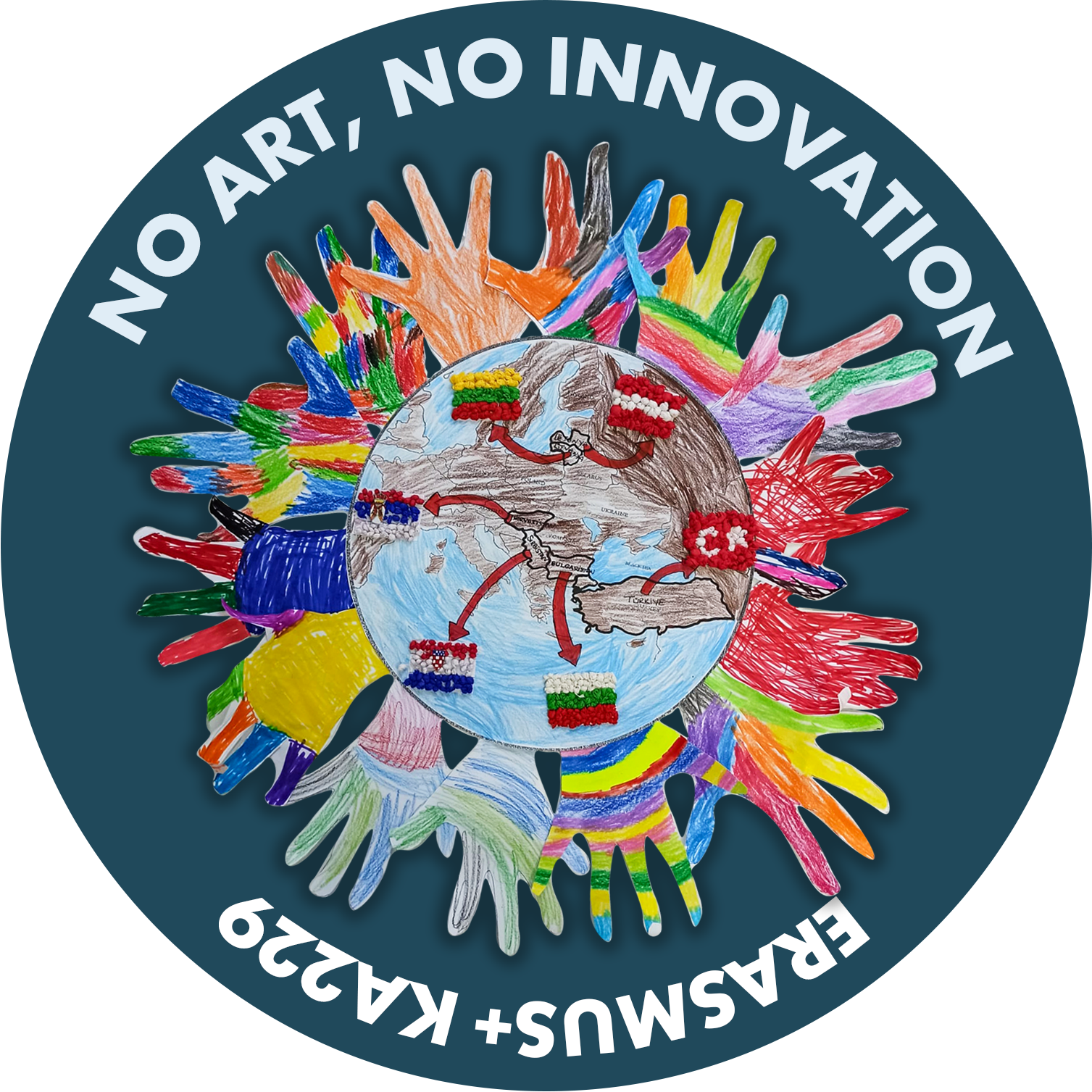After we have brainstormed on the question “How can we ensure that preschool students would be creative children?” with all our partners, we reached the conclusion that we need to relate our topic with Innovation, which is an important title in the world agenda and for which many countries and organisms strive to develop strategies. In this context, all partners have done need analysis and we have determined our project topic as Innovation through Art in Preschool, which accords to our educational stage and curriculum. Our project topic is based on the items Stem, Nature, Recycling, Mathematics, Biomimicry and kneading via the question “What can be the LTT topics where we can concretely relate art and innovation?” On this basis, LTT topics were distributed in a way every country can contribute the most. In our 24-month length project, 6 LTTs will be done in Bulgaria, Latvia, Croatia, Lithuania, Serbia, and Turkey. Three teachers, who will be selected according to participant criteria from every partner country, will attend these LTTs. Each LTT will be five days. One of the EU 2020 Strategy objectives is that, in every stage of education, creativity and innovativeness including entrepreneurship are encouraged. In this context, it is important that our teachers develop activities that involve creative and innovative thinking in their in-class activities as well as their activities outside of the class. It is not sufficient to develop modern educational policies and strategies and to give place to creativity and innovation in our curricula solely but it is also needed to be professional in this field. Preschool art activities contribute to children’s design-centered thinking and to their innovative being. Therefore, we called our project “NO ART, NO INNOVATION”. Creativity is the main source of innovation (Council of EU, 2008:2). While creativity is an individual effort, innovation is related to team efforts. The capacity for creativity needs to be increased. Therefore, educational systems should ensure the development of competence by supporting creativity (ATEE, 2009: 5). At this point, schools are supposed to make them acquire skills that prepare them for the future such as creativity, innovation and entrepreneurship (Learning, and Teaching Scotland, 2007:3-6). Depending on these results and as a result of needs analyses that we and our partners did, it was revealed that teachers are required to contribute to their occupational development in art activities that develop innovative thinking. The objective of our project is to make our teachers gain occupational competence in the “innovation with art activities” in preschool, to compensate for our deficiencies by examining the work of our partners in Europe, and then to increase the capacity of our institutions by conveying this knowledge and experience to our students and institutions. We aim to transfer the knowledge and experience which are gained by enhancing the quality of our institutions and improving our teachers occupationally to our institutions, parents, other shareholders, and other schools in the same educational stage with us. With our project, we want to make art activities with the items Stem, Nature, Recycling, Mathematics, Biomimicry, and Kneading and to integrate art activities to our classes by concreting them in an innovative dimension. As a result, we aim to have students who create innovative ideas, have self-confidence, do not hesitate to ask a question, are researchers and have gained problem-solving skills. Consequently, our project matches up with the EU 2020 vision and the objectives that are included in the strategic plans of our partners. Main objectives of our project; - To draw attention to the importance of innovation in education, - To be able to design art activities that encourage to research, produce, and make an invention, - To make our teachers and children meet activities which will make them think innovation and design-oriented through art activities, - To draw attention to the importance of nature, recycling, and mathematics in art activities and their effect on innovative thinking, - To draw attention to the effect of biomimicry activities on innovative thinking and design-oriented thinking.


